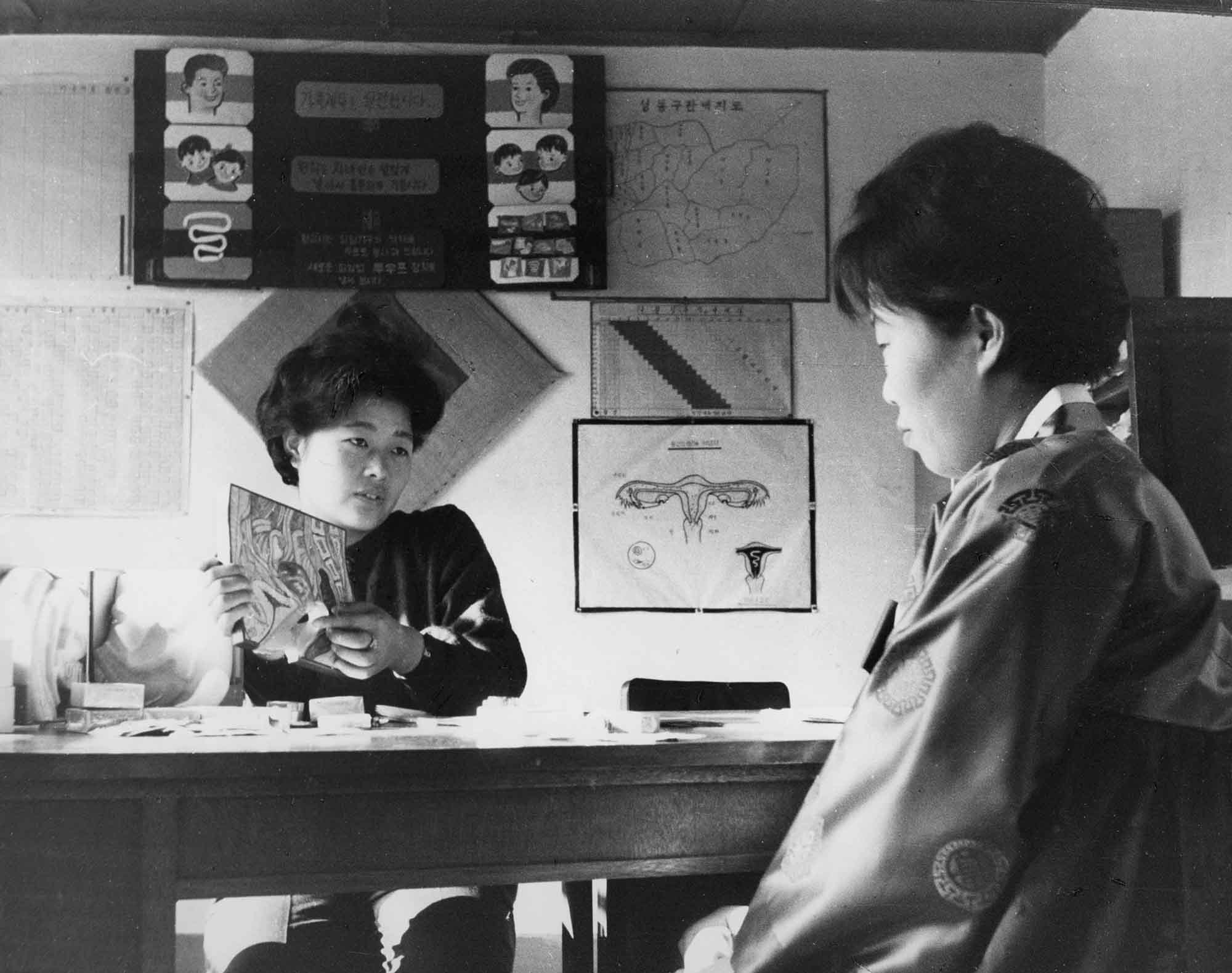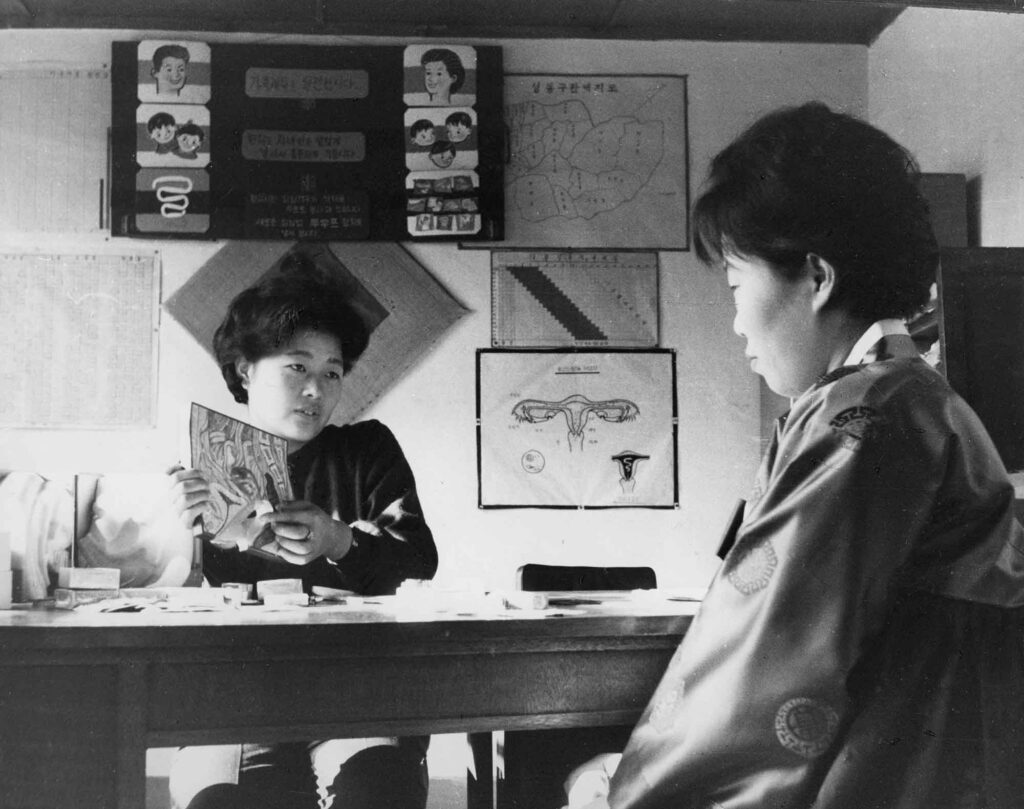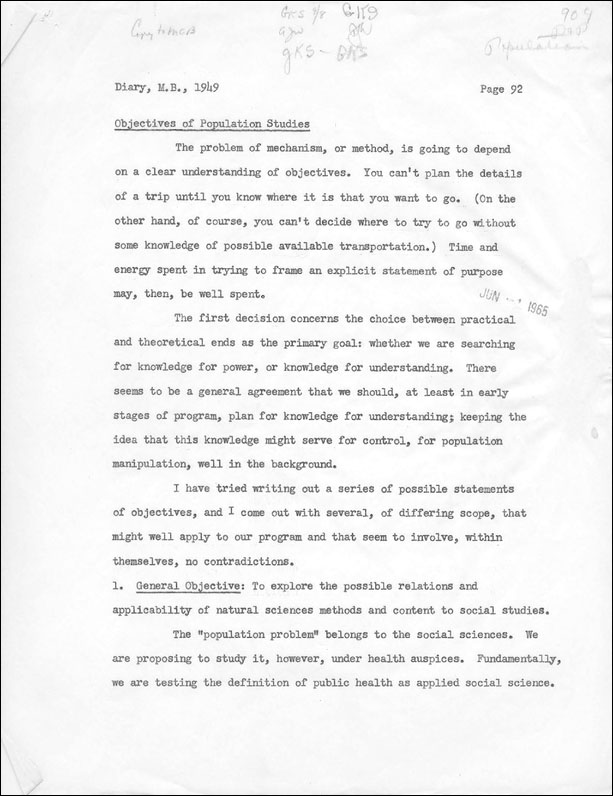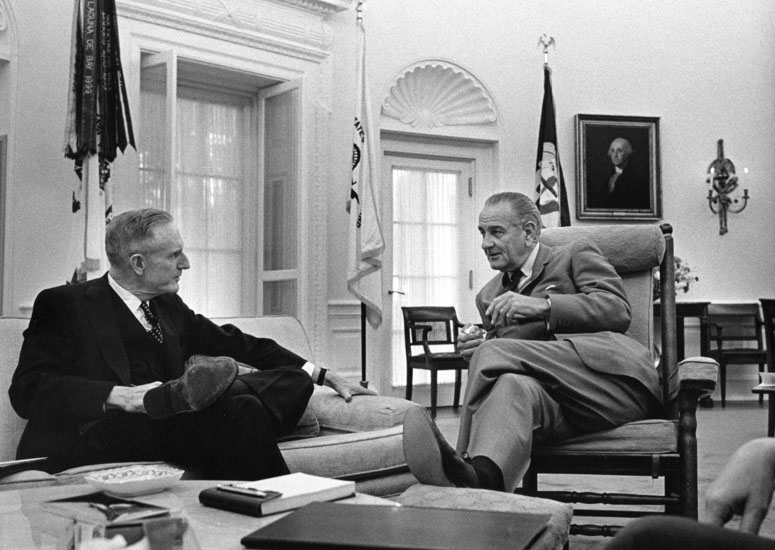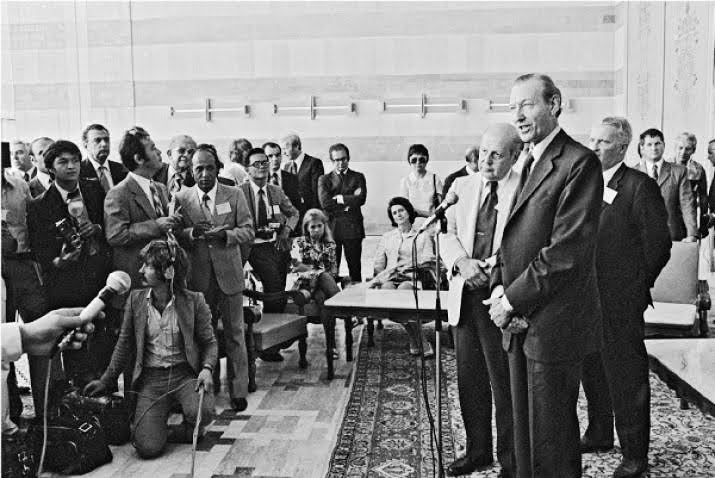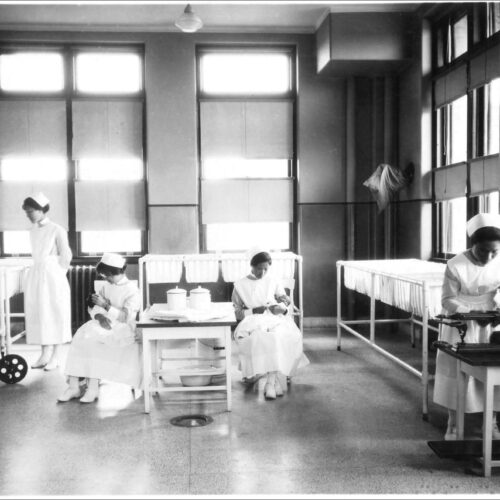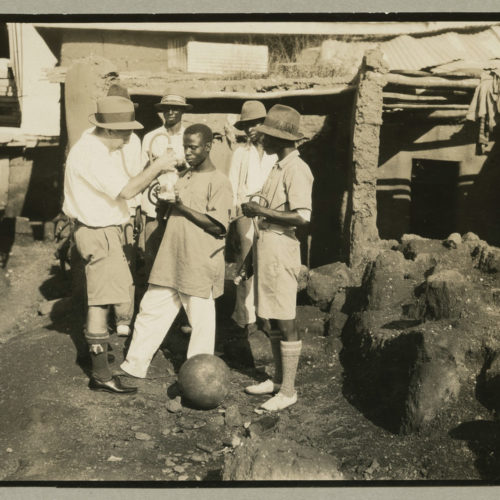Issues of family planning and concerns over population growth have long interested the Rockefeller family and their philanthropies. But deciding how to give funding, and to which aspects of the “population problem,” has not always come easily. As one Rockefeller Foundation president explained:
It is doubtful whether there is any problem in the world more threatening in its implications than uncontrolled population growth. Its effects are already, either directly or indirectly, touching the lives of almost every man, woman, and child. Yet, there is no concept that has been the subject of more heated public debate than that of family planning.
J. George Harrar, 1967“Philanthropic Risk,” by J. George Harrar, Rockefeller Foundation Annual Report, 1967, p.6
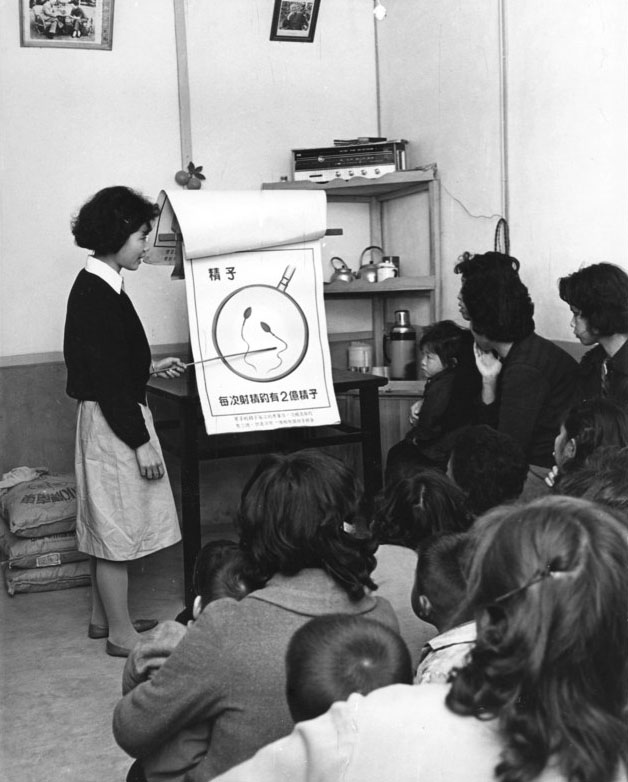
A Controversial Cause
Concern with family planning issues among the Rockefeller philanthropies began with John D. Rockefeller, Jr., who developed an interest through his involvement with the Bureau of Social Hygiene (BSH) in the 1910s and 1920s. JDR Jr. hoped that support for family planning initiatives would help solve pervasive social ills, including poverty and crime.
In addition to funding the BSH, JDR Jr. also contributed privately to causes that the BSH was unable or unwilling to support. Following a request by Margaret Sanger’s American Birth Control League for $10,000 to fund research into contraception methods, RF trustee, Raymond Fosdick, advised JDR, Jr. from his vantage point as both attorney and personal friend, and expressed his thoughts on the importance of the proposed research:
Personally, I believe that the problem of population constitutes one of the great perils of the future and if something is not done along the lines that these people are suggesting, we shall hand down to our children a world in which the scramble for food and the means of subsistence will be far more bitter than anything we know at present.
Raymond Fosdick to John D. Rockefeller, Jr., 1924Letter from Raymond Fosdick to John D. Rockefeller, Jr., June 13, 1924, Rockefeller Archive Center (RAC), Rockefeller Family Boards, RG III 2 K, Box 1, Folder 1.
Yet Fosdick’s letter also went on to acknowledge the delicate nature of the birth control issue in terms of public perception. Days later, JDR Jr. authorized an anonymous donation to Sanger’s cause.
Confronting Population Growth
Perhaps influenced by his father, population growth was an issue of particular interest to John D. Rockefeller, 3rd (JDR 3rd). In the 1940s an increasing global population coincided with growing public awareness of limited global resources. Moreover, population growth was in part attributed to the success of modern public health initiatives, many of which had been supported by the Rockefeller Foundation.
JDR 3rd’s support for family planning was more public than his father’s. He made his interest in the issue clear to RF trustees, and he pressured them to act more definitively on population control issues. At his urging, a demographic survey of the Far East was organized in 1948. The subsequent report, Public Health and Demography in the Far East, noted the high rates of population growth in the region as well as the need for efforts in fertility control, education, and agricultural development.
In spite of JDR 3rd’s pressure, few RF resources were devoted to population control in the 1940s and 1950s. Instead, the Foundation turned to agriculture, which provoked far less controversy by addressing the issue of adequate resources rather than family size. Population control proved contentious at home in the US, and many foreign governments viewed plans directly targeting it as at least culturally unsuitable if not imperialistic.
Human Ecology
The invention of agriculture did not immediately result in great increases of population, but its subsequent improvement has done so, and has created the potentialities for still greater increases.
Rockefeller Foundation Natural Sciences Director Warren WeaverWarren Weaver, “The World Food Problem, Agriculture and the Rockefeller Foundation.” June 21, 1951. Rockefeller Archive Center (RAC), RG 3.1, series 908, box 14, folder 144, p. 2.
As the Rockefeller Foundation shifted its geographic focus to the developing world in the wake of World War II, it began to address population issues through the lens of what it termed “human ecology.” The Mexican Agriculture Program (MAP) begun in 1943 opened up new possibilities for the Foundation to contribute to the “well-being of mankind” in Latin America, Asia, and Africa. It also evidenced agriculture’s complicated relationship to broader social, economic, political, and environmental factors.
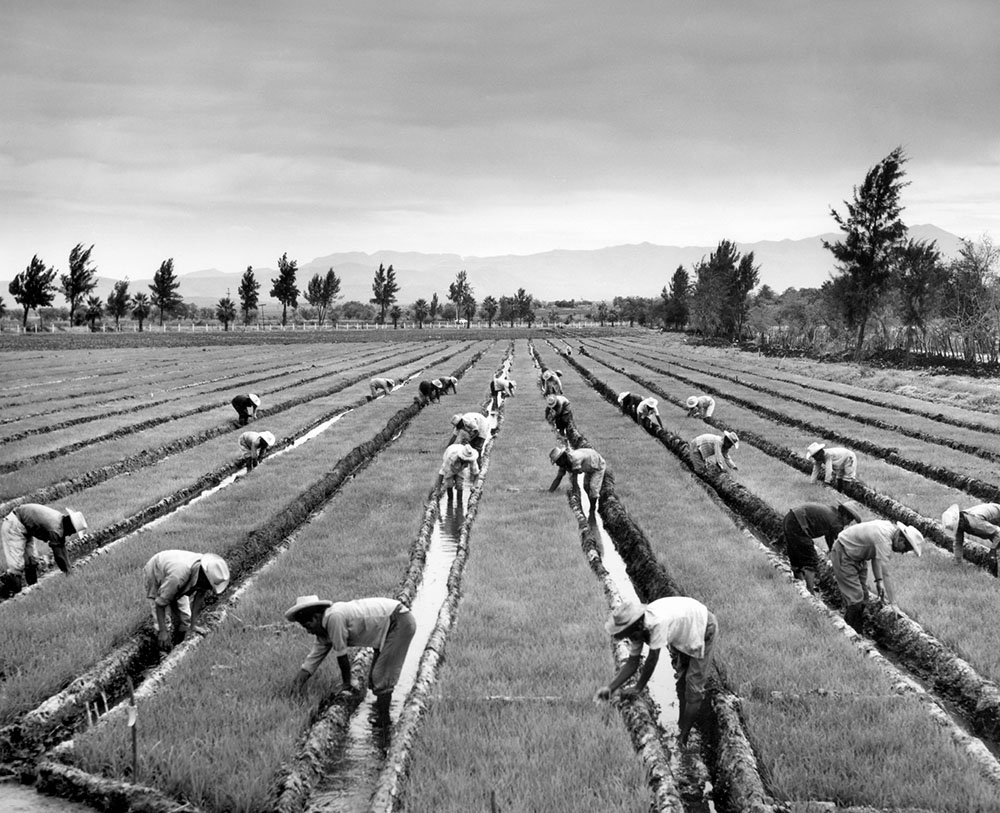
The widening gap between developed and developing nations, the instability of nations emerging from colonial rule, and the rapid increase in population in environmentally-challenged areas were problems with global implications. To a certain degree, some Foundation staff felt a special obligation to work on population because the Foundation’s health work had been criticized for curing disease only to leave people to starve. Similarly, the new agriculture work was criticized for placing too much pressure on limited resources, feeding too many people for the earth to sustain in the long term.
Titling an exploration of population issues “human ecology” accomplished several goals. It conveyed the interest of Foundation leaders in a host of interrelated issues that included (but was not limited to) population growth. It deflated potential controversy by de-emphasizing any direct interest in family planning. It enabled the Foundation to accomplish an internal transfer of power as it dismantled the International Health Division (IHD) in 1951, in favor of programs that built on the Foundation’s investment in agriculture. And, finally, it signaled that the Foundation’s work, even in politically charged contexts, aimed for disinterested, scientific objectivity.
Tools for Development
The dawning computer age expanded analytic capacities, enabling scientists and social scientists to grapple with thousands of factors as never before, and Foundation officers and trustees put a great deal of faith in statistical analysis as a tool of rational and efficient management. Throughout the 1940s and 1950s, the Foundation supported demographic studies at institutions including the Scripps Foundation for Research in Population Problems, the International Union for Scientific Study of Population, and especially Princeton’s Office of Population Research.
In 1948, the Far East survey JDR 3rd pressed so hard for was jointly sponsored by the IHD and the Division of Social Sciences. The work was led by IHD staffer Marshall C. Balfour and Princeton demographers Frank Notestein and Irene Taeuber. Shortly thereafter, and throughout the 1950s, the Foundation’s program officers considered whether to recommend creating a program in India. In India, they confronted the daunting task of effecting systemic change within a complex culture, geography, and economy, and they relied heavily on this new kind of statistical analysis to understand the challenges they would be taking on.
Population, with its clear connections to birth rates and life expectancy, seemed to be the logical province of the medical sciences, and thus the IHD spearheaded the Foundation’s initial exploration. But biologist Marston Bates, hired to assist Balfour in the Far East survey, argued that “the ‘population problem’ belongs to the social sciences,” because it involved “values, social wisdom, and human purposes” as much as biology and health.Marston Bates’ diary excerpt, 1949. RAC, RG 3.2, series 900, box 57, folder 310, p. 93.
Moreover, social science understandings were essential to changing human behavior, so the Social Sciences division agreed to lead a series of internal RF discussions on population issues. Ultimately, however, it would be the agriculture program, and the to the Natural Sciences division to which it was added in 1952, that would work in the field of population and “human ecology” most directly.
Agriculture and Population
Ecology as a concept originated in biology to describe natural environments as weblike systems of multiple, interdependent factors. Framing the population discussion as “ecological” introduced nutrition and resource distribution as elements of public health. The IHD’s single-disease approach, which had helped build the Foundation’s worldwide reputation, was seen as insufficient in the changed postwar world. As JDR 3rd told the IHD Commission on Review in 1951, “hunger as a basic problem has now succeeded disease.”Notes from the Meeting of the Rockefeller Commission on Review of the International Health Division, June 29, 1951. RAC, RG 3.1, series 908, box 14, folder 144, p. 11.Natural Sciences Director Warren Weaver described this shift in terms of a Cold War context:
What are now the great enemies of the welfare of mankind? Hunger, the incapacity of the hungry, the resulting general want, the pressures of expanding and demanding population, and the reckless instability of people who have nothing to lose and perhaps something to gain by embracing new political ideologies designed not to create individual freedom but to destroy it.
Rockefeller Foundation Natural Sciences Director Warren WeaverWarren Weaver, “The World Food Problem, Agriculture and the Rockefeller Foundation.” June 21, 1951. Rockefeller Archive Center (RAC), RG 3.1, series 908, box 14, folder 144, p. 1.
Population and the Cold War
In the postwar era, the Rockefeller Foundation operated in an expanded arena that included the American government’s technical assistance programs as well as multilateral aid and development organizations. On the one hand, the Foundation was an American institution and its leaders shared US Cold War ideologies, seeing aid programs as powerful persuasive tools for promoting democracy in underdeveloped countries and preventing them from becoming Communist. On the other hand, nonpartisanship had historically opened many doors to the Foundation, and countless internal discussions revolved around respecting other cultures and meeting their needs on their own terms.
Human ecology, while concerned with population, was perhaps even more concerned with the large-scale economic and political transformations of agrarian societies in the age of modernization. In this context, agriculture emerged as the forum through which the Rockefeller Foundation hoped to influence not only food production but social issues. The deep connections among food, health, environment, population, and international relations became more and more clear. Throughout the 1960s, population work would become an increasingly explicit feature of the Foundation’s programs.
The Population Council, Inc.
But in the meantime, unable to interest the Foundation in funding projects aimed at actually curbing population growth, JDR 3rd sought new outlets. In June 1952, he sponsored the Conference on Population Problems, held at Colonial Williamsburg and co-sponsored by the National Academy of Sciences. Attendees discussed the problems associated with rapid global population growth and possible responses, including contraception, research, and cultural change. Toward the end of the conference, a resolution was introduced to develop a permanent council devoted to population control.
In the months following the conference, JDR 3rd composed a memorandum titled “Opportunities in the Broad Field of Population,” which listed potential activities to be undertaken by a proposed population council. By November of 1952, The Population Council, Inc., was incorporated “…to stimulate, encourage, promote, conduct and support significant activities in the broad field of population.”Certificate of Incorporation of The Population Council, Inc., November 7, 1952, RAC, Family Records, Papers of John D. Rockefeller, 3rd, RG 5, Series 1.5, Box 82, Folder 682.
Much of the Council’s funding came from the personal contributions of JDR 3rd, as well as from outside sources including the Ford Foundation and the Rockefeller Brothers Fund. The Council attempted to strike a balance between scientific research and activism, and much early funding supported fellowships to individuals from developing nations interested in studying demography.
Population and the Rockefeller Foundation
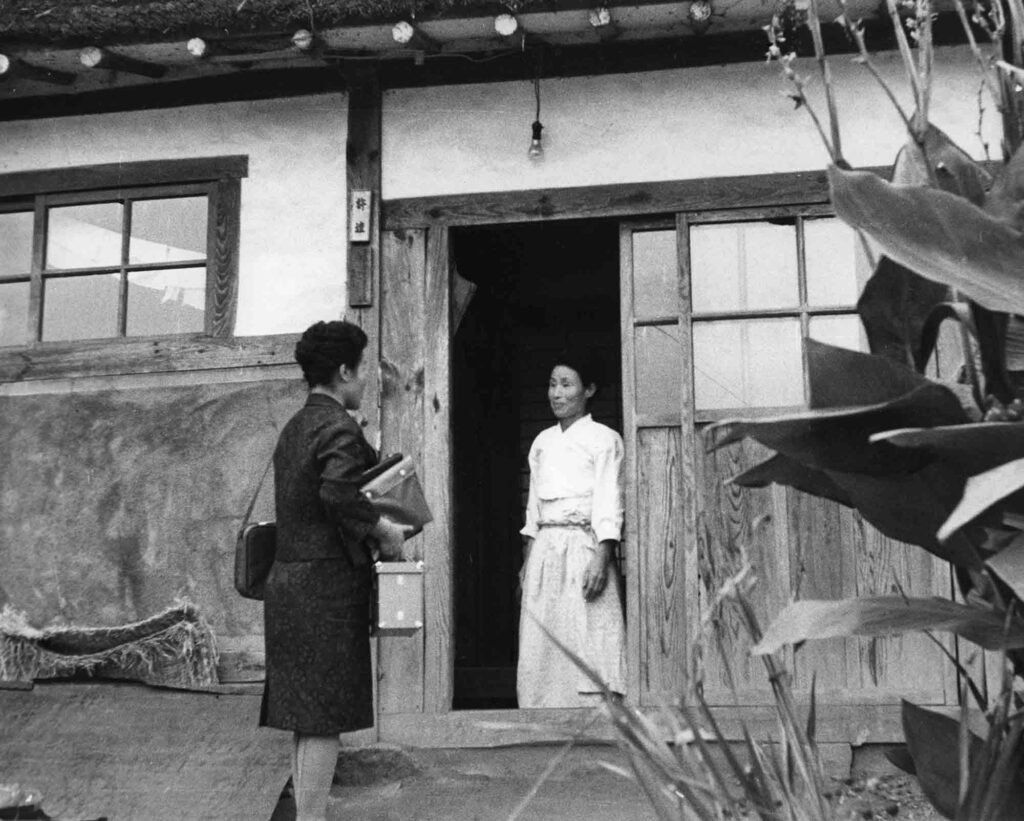
Despite the Rockefeller Foundation leadership’s desire to avoid heavy involvement in population issues, the Foundation did fund some limited projects prior to the 1960s. In 1953 it began supporting a Harvard School of Public Health study of population problems in rural India. The study sought to introduce contraception to the rural population and measure the program’s impact on family planning, as well as on the overall health and economy of the communities involved. As noted by John E. Gordon, the study’s director, “The aim of population control is more than mere control of numbers. Control of numbers will be successful only if it results in a better quality of human life.”Rockefeller Foundation resolution, December 1-2, 1953, RAC, RG 1.2, Series 200, Box 45, Folder 369.
Several other philanthropic foundations have done significant long-term work in family planning (often focusing on India, as did the RF-supported Harvard study) — the Ford Foundation is perhaps the best-known of these. Beginning in 1970, the Rockefeller and Ford Foundations together sponsored a competitive program of research awards in population and development policy that ran for more than ten years.
Only after the success of several programs of the Population Council did the Rockefeller Foundation trustees begin to allocate significant funding for population projects. In 1963, as part of a major programmatic reorganization, the RF developed its own program to focus on population issues. By 1982, this had become the Population Sciences Program, directed by Sheldon J. Segal, which supported basic research in fertility regulation. Population Sciences focused on three major areas: research in reproductive biology, research on contraceptive technology, and policy studies. Also in 1982, signaling the Foundation’s turn toward deeper engagement in population, Canadian physician John R. Evans, Director of the Department of Population, Health, and Nutrition at the World Bank, was elected an RF trustee (eventually becoming chair, 1987-1995). In 1983, the Foundation initiated a research program through Harvard University to study the connections between the status and roles of women and fertility, including the impact of women’s education on family size.
For its part, JDR 3rd’s Population Council continues its work today and has sponsored family planning and health programs in numerous countries, while Council-funded research has led to the development of several hormonal contraceptives, including Norplant, which has been widely used in the developing world. After the Rockefeller Foundation adopted its own program in population in the 1960s, the Population Council became a regular grantee of the RF. Over the years, the Foundation made grants to support its international technical assistance programs, its fertility research programs, as well as a large fellowship program for scholars in the social sciences studying fertility, among numerous other grants.
Research This Topic in the Archives
Explore this topic by viewing records, many of which are digitized, through our online archival discovery system.
- “Birth Control – American Birth Control League – Contributions,” 1924-1938. Office of the Messrs. Rockefeller records, Medical Interests, Series K, Rockefeller Archive Center.
- “John D. Rockefeller, Jr.’s Advisory Committee – General,” 1919-1931. Office of the Messrs. Rockefeller records, Rockefeller Boards, Series O, Rockefeller Archive Center.
- “John D. Rockefeller, Jr.’s Advisory Committee – Reports,” 1914-1925. Office of the Messrs. Rockefeller records, Rockefeller Boards, Series O, Rockefeller Archive Center.
- “Population Council, Inc. – Bylaws and Certificate of Incorporation,” 1952. John D. Rockefeller 3rd papers, Office of the Messrs. Rockefeller Files, Series 1, Population Interests, Subseries 5, Rockefeller Archive Center.
- “Harvard University – Indian Population – (Gordon, John E.),” 1953-1961. Rockefeller Foundation records, Projects (Grants), Record Group 1, Subgroup 1.2, United States, Series 200, General (No Program), Subseries 200.GEN, Rockefeller Archive Center.
- “Population Council, Inc. – Family Planning,” 1959-1962. Rockefeller Foundation records, Projects (Grants), Record Group 1, Subgroup 1.2, United States, Series 200, General (No Program), Subseries 200.GEN, Rockefeller Archive Center.
- “John D. Rockefeller, Jr.’s Advisory Committee – Reports,” 1914-1925. Office of the Messrs. Rockefeller records, Rockefeller Boards, Series O, Rockefeller Archive Center.
- “Sauer, Carl O.,” 1943-1954. Joseph H. Willits Papers, General File, Series 1, Rockefeller Archive Center.
- “Program and Policy,” 1915-1916, 1921, 1932, 1934, 1936, 1943,1947-1964. Rockefeller Foundation records, Projects (Grants), Record Group 1, Subgroup 1.2, South Asia Region, Series 460, General (No Program), Subseries 460.GEN, Rockefeller Archive Center.
- “Program and Policy – Commission on Review,” 1950 November-1951 December. Rockefeller Foundation records, Administration, Program and Policy, Record Group 3, Subgroup 3.1, International Health Division, Series 908, Rockefeller Archive Center.
- “Program and Policy – Agriculture,” 1927-1955. Rockefeller Foundation records, Administration, Program and Policy, Record Group 3, Subgroup 3.1, Natural Sciences and Agriculture, Series 915, Rockefeller Archive Center.
- “Program and Policy – Population,” 1946-1953, 1955-1956, 1958, 1962-1965, 1968-1970, 1972-1973. Rockefeller Foundation records, Administration, Program and Policy, Record Group 3, Subgroup 3.2, General Program and Policy, Series 900, Rockefeller Archive Center.
- “Program and Policy – Underdeveloped Areas,” 1930, 1933-1934, 1948-1952, 1954-1955. Rockefeller Foundation records, Administration, Program and Policy, Record Group 3, Subgroup 3.2, General Program and Policy, Series 900, Rockefeller Archive Center.
- “Program and Policy – Underdeveloped Areas,” 1956-1958, 1960-1972 September. Rockefeller Foundation records, Administration, Program and Policy, Record Group 3, Subgroup 3.2, General Program and Policy, Series 900, Rockefeller Archive Center.
- “Population Council – Technical Assistance – Taiwan,” circa 1905-1980. Rockefeller Foundation records, Photographs, United States, Series 900, Rockefeller Archive Center.
The Rockefeller Archive Center originally published this content in 2013 as part of an online exhibit called 100 Years: The Rockefeller Foundation (later retitled The Rockefeller Foundation. A Digital History). It was migrated to its current home on RE:source in 2022.
